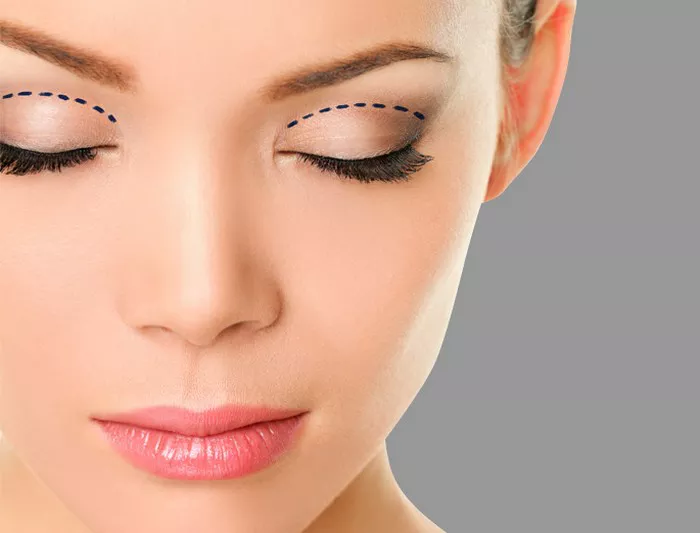Eye lift surgery, medically known as blepharoplasty, is a popular cosmetic procedure designed to rejuvenate the appearance of the eyes. It is often sought after to address concerns such as drooping eyelids, excess skin, and puffiness around the eyes. While blepharoplasty primarily focuses on enhancing the eye’s aesthetic appeal, there is a common question among individuals considering the procedure: Does eye lift surgery require fat removal? In this comprehensive article, we will explore the nuances of eye lift surgery, including when fat removal may be necessary, the different techniques used, and what you can expect from the procedure.
Understanding Eye Lift Surgery
Eye lift surgery, or blepharoplasty, is a surgical procedure that targets the upper and lower eyelids to address various cosmetic concerns and signs of aging. The procedure can be performed on the upper eyelids, lower eyelids, or both, depending on the patient’s specific needs.
Key components of blepharoplasty include
Upper Eyelids: Upper eyelid surgery typically involves the removal of excess skin and, in some cases, underlying fat. It aims to correct drooping eyelids and restore a more youthful, refreshed appearance.
Lower Eyelids: Lower eyelid surgery may involve the removal or repositioning of excess fat, often referred to as “eye bags,” as well as the removal of excess skin. It is performed to reduce puffiness and improve the contour of the lower eyelids.
Combination Procedures: Some individuals may benefit from a combination of upper and lower eyelid surgery to address both upper eyelid hooding and lower eyelid bags.
When Does Eye Lift Surgery Involve Fat Removal?
The necessity for fat removal during eye lift surgery depends on the individual’s specific anatomical features and cosmetic concerns. Here are some scenarios where fat removal may be part of the procedure:
Excess Fat Deposits: One common reason for fat removal in eye lift surgery is the presence of excess fat deposits in the upper or lower eyelids. These fat deposits can create a puffy or swollen appearance, often referred to as “eye bags” in the lower eyelids. In such cases, the surgeon may choose to remove or reposition the excess fat to achieve a smoother contour.
Upper Eyelid Hooding: In some cases of upper eyelid surgery, particularly when addressing significant hooding or drooping of the upper eyelids, there may be underlying fat that contributes to the issue. In these instances, the surgeon may decide to remove a portion of this fat to achieve the desired aesthetic outcome.
Lower Eyelid Contouring: Lower eyelid surgery often involves the delicate process of fat removal or repositioning. This is done to improve the contour of the lower eyelids and reduce puffiness. The goal is to create a more youthful and rested appearance.
Customized Approach: It’s important to note that eye lift surgery is highly customizable. Surgeons assess each patient’s unique facial features and concerns before determining the extent of fat removal, if any, that is required to achieve the desired results.
Techniques for Fat Removal in Eye Lift Surgery
When fat removal is part of an eye lift surgery, the surgeon may employ different techniques based on the patient’s needs. These techniques include:
Fat Excision: The surgeon makes discreet incisions in the eyelid area, either on the inner surface of the lower eyelid (transconjunctival approach) or along the natural creases of the eyelids. Through these incisions, excess fat is either excised (removed) or repositioned to create a smoother contour.
Transconjunctival Approach: This technique is often used for lower eyelid surgery. It involves an incision on the inner surface of the lower eyelid, eliminating the need for external incisions. Excess fat can be accessed and addressed through this internal approach.
Fat Repositioning: In some cases, rather than removing excess fat, the surgeon may choose to reposition it to areas where volume is needed. This can help achieve a more youthful and balanced appearance.
What to Expect After Eye Lift Surgery
After undergoing eye lift surgery, whether it involves fat removal or not, there are certain post-operative considerations:
Recovery Period: Expect some swelling and bruising around the eyes, which is normal after surgery. These side effects typically subside over the course of a few weeks.
Results: The final results of eye lift surgery become more apparent as the swelling decreases. Patients can expect a more youthful and refreshed appearance, with improvements in eyelid contour and reduced puffiness.
Longevity: The results of eye lift surgery are long-lasting, but the aging process continues. While the procedure can turn back the clock, it does not stop it. Over time, some natural aging changes may occur.
Follow-Up Care: It’s crucial to follow the post-operative care instructions provided by your surgeon to ensure proper healing and optimal results.
Conclusion
Eye lift surgery, or blepharoplasty, is a versatile cosmetic procedure designed to address various concerns related to the appearance of the eyes. Whether fat removal is necessary during the surgery depends on the individual’s unique anatomy and cosmetic goals. In cases where excess fat contributes to puffiness, an experienced surgeon may choose to remove or reposition the fat to achieve a smoother and more youthful eyelid contour. The key to a successful eye lift surgery lies in the customization of the procedure to meet the patient’s specific needs, resulting in a refreshed and rejuvenated appearance.

